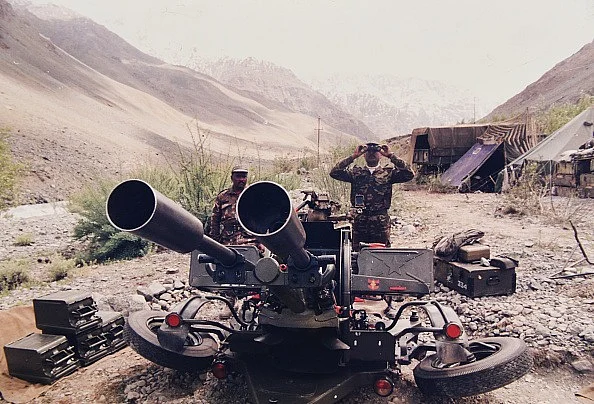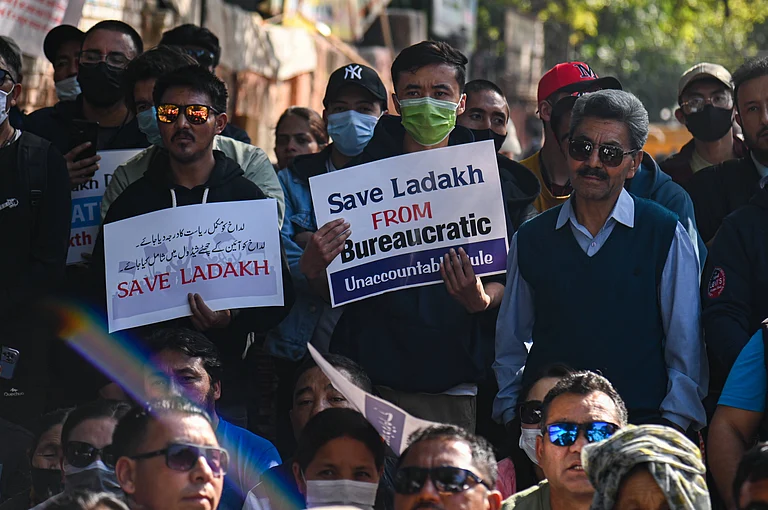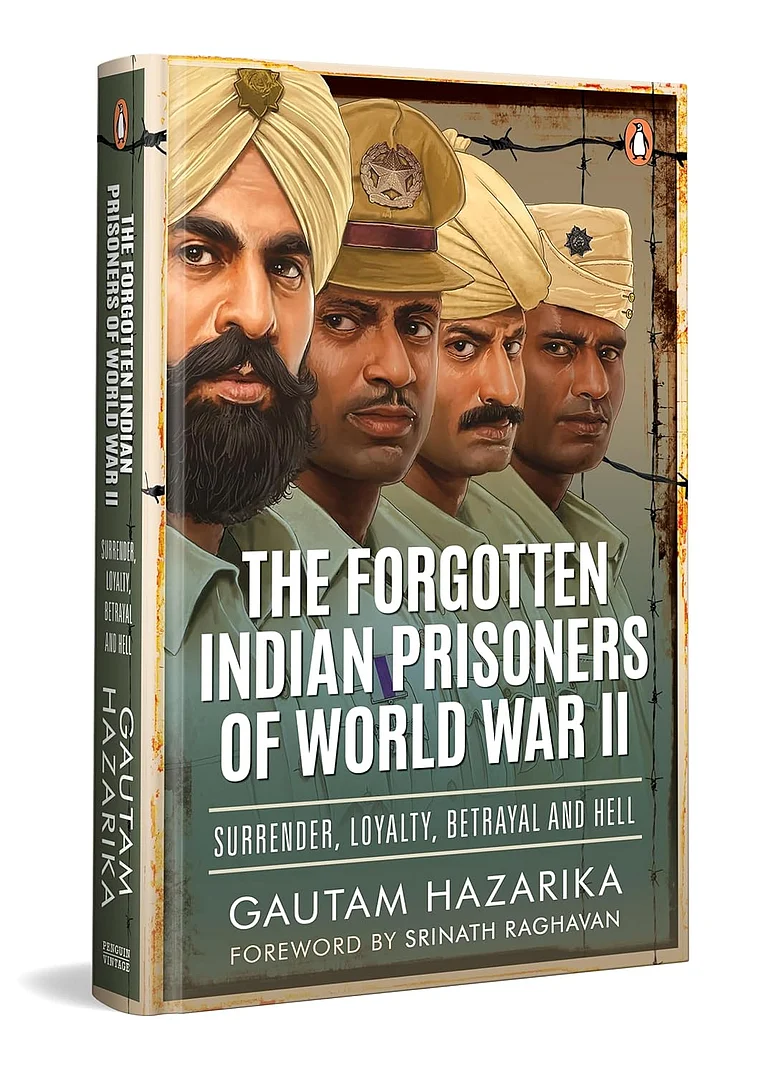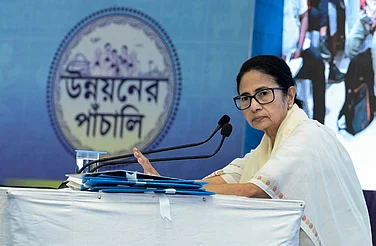A quarter century has passed since the Kargil War, codenamed 'Operation Vijay', allowing the opportunity to reflect on and rekindle India's memory of this pivotal conflict, which permanently transformed the dynamics of its military and geopolitical landscape.
From May 3, 1999 to July 26, 1999, India and Pakistan were engaged in high-altitude warfare in the district of Kargil - sandwiched between the Great Himalayas and Zanskar Range in Ladakh. Due to the perilous weather in the region, the Indian Army had vacated its desolate forward outposts—typically at elevations of 14,000 to 18,000 feet—during the harsh winter months preceding the crisis. These outposts, normally perennially supervised, were left empty, creating substantial gaps in India's defences along the Line of Control (LoC). This presented an opportunity for Pakistani planners, who saw the strategic location of these vacated outposts as prime targets. The location of these outposts on easily defended high ground made them an attractive target as it demanded Indian troops to launch uphill assaults in order to recapture them.
A couple of months shy of the Kargil war, which was orchestrated under General Pervez Musharraf’s military leadership, a hopeful Vajpayee had visited Lahore. The infiltration, however, proved hypocritical to the Lahore Declaration of 1999 - signed by then Pakistan Prime Minister Nawaz Sharif - which aimed to promote peace and nuclear non-proliferation between the two nations.
Local shepherds were the first to report the presence of unidentified personnel to the Army unit at Banju Headquarters in the Kargil sector. In response, reconnaissance patrols were dispatched to investigate the situation. Over the following days, extensive patrolling and aerial reconnaissance operations were conducted, revealing the scale of Pakistan's invasion and preparation. Their infiltration, codenamed "Operation Badr", aimed to pressurise Indian forces to withdraw from the Siachen Glacier by inconspicuously capturing their winter-vacated posts. The goal was to coerce Vajpayee’s government into negotiating a settlement of the broader Kashmir dispute.
The Indian government mandated that the LoC should not be crossed by the Indian armed forces, to prevent the conflict from escalating. Reclaiming the ridge-lines from enemy forces became particularly challenging due to the high altitudes and heavy enemy fire from multiple directions. It took the Indian Army over a week to formulate a strategy allowing the incursion to remain undetected for several days. On May 11, the Army sought the Indian Air Force's assistance, requesting armed helicopters to support the ground troops. Army Headquarters concluded that maximum available airpower would be required before infantry battalions could launch assaults to retake each post. Formation commanders stressed the need for coordinated preparatory bombardment to destroy the enemy's fortified positions and ground strikes by Indian Air Force (IAF) fighter aircraft were deemed necessary, particularly against enemy positions not directly visible to ground observers. Cabinet approval was sought and obtained for these air strikes. The first air-to-ground strikes by IAF fighter aircraft were launched on May 26, 1999, as part of Operation Safed Sagar.
The Indian Army, Air Force, and Navy launched a coordinated effort to reclaim the occupied territories. The military followed a convict-evict-deny strategy, deploying 5 infantry divisions, 5 independent brigades, and 44 battalions from the Kashmir Valley to the Kargil sector, ultimately mobilising 2,00,000 Indian troops. The Indian Navy also played a crucial role, deploying its largest fleet in the Arabian Sea to deter any further escalation.
The conflict in Kargil unfolded almost concurrently with a war in Kosovo (a Serbian province) that captured global attention and was eventually resolved through NATO intervention. This distraction caused IAF’s airpower excellence to be largely neglected, especially by defence experts. Nevertheless, Kargil stands as a significant case study in joint warfare, highlighting the unique challenges of deploying modern airpower in high-altitude mountainous conditions.
The war also raised concerns for the Clinton administration in the United States around the potential for nuclear escalation as both India and Pakistan had declared their nuclear capabilities just a year before the conflict. The diplomatic engagement saw the USA siding publicly with India against Pakistani aggression for the first time. This led to the eventual withdrawal of Pakistani troops by late July.
The Kargil War had significant political repercussions. In India, it led to a re-evaluation of intelligence and defence structures.The Kargil Review Committee (KRC), was established on the 29th of July, 1999. Chaired by K. Subrahmanyam, it recommended the creation of the Chief of Defence Staff (CDS) position. This was finally implemented in 2019 by the Narendra Modi government, and the first CDS to be appointed was late Army Chief Bipin Rawat.
The KRC was regarded as groundbreaking due to its radical recommendations. It highlighted that the decision-making processes, procedures, and organisational structures were outdated, having been established by Lord Ismay during the colonial era. Although Defence Minister George Fernandes and National Security Advisor Ajit Doval managed Kashmir operations during the Kargil War, the decolonisation of Indian bureaucracy remained incomplete. Decisions were more process-driven rather than result-oriented.
The report from the Committee states that ‘Kargil was only a damage-limiting operation, and no victory was aimed at or obtained.’ According to it, India had not taken substantial steps to develop independent legislation in defence since 1947. The question of emergence of nuclear weapons and advancements in military affairs had not been adequately addressed in terms of India’s security framework. It recommended that the future composition and strategy of the armed forces should be the focus of a high-powered independent commission.
When the US determined that Pakistan had deliberately violated the LoC near Kargil, President Clinton quickly blamed Pakistan for risking a great war. Despite Pakistan's provocations, India showed restraint, effectively avoiding a large-scale war. This conflict did not compare to India's previous wars in 1947-48, 1962, 1965, and 1971 in terms of forces involved or casualties incurred, but it set the stage for Clinton’s visit to India a year later—the first by an American President in over 20 years.
On the diplomatic front, the G-8 nations condemned Pakistan for their actions in Kargil, driven by concerns over Islamic fundamentalism and international terrorism. China also refrained from supporting Pakistan due to its own issues in Tibet and Xinjiang and the potential threat of Mujahideen fighters appearing there.
India’s war effort in Kargil will remain historic in many ways. The use of surveillance systems, advanced weaponry and cyber systems revolutionised the function of the Indian military. As the first Indian war to be televised in real time, media coverage played a powerful role in galvanising national support. However, Kargil’s legacy extends beyond the immediate military and political outcomes, offering crucial insights for contemporary security, diplomacy, and governance.


























